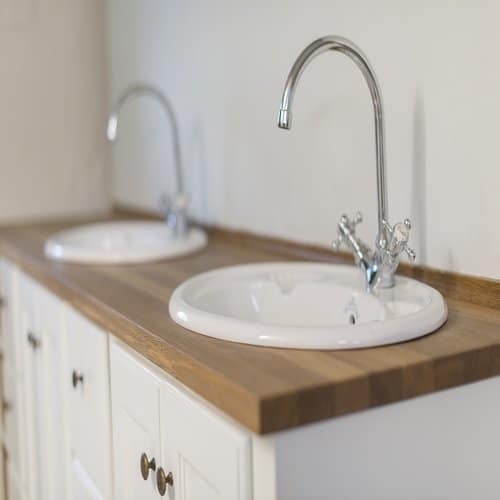Waterproofing is essentially important if you own a house, as it is inevitable that certain part of your house will come into contact with water, such as bathrooms. If there is no sufficient prevention measure, it is just a matter of time that somewhere will start to leak. And if the leak is left undetected for a period long enough, damages in the house will potentially occur. Such damages are like growth of mold, which can be harmful to people with respiratory problems such as asthma, “concrete cancer”, where the steel reinforcing the concrete starts to rust, causing it to displace and will ultimately weaken the building’s foundations, decaying of wood/ timber flooring or structures, corrosion of plumbing and even compromising the electricity or other electrical appliances at home.
So, what is waterproofing and why is it an important process? Waterproofing is the development of a “barricade” over the surfaces of structures, roofs, walls and the foundations of a building. It acts as a barricade because it prevents water penetrations through these surfaces. Wet areas are usually the spaces where sanitary fixtures are at or spaces that are exposed or subjected to high moisture, rain, or water. For example, bathrooms.
Bathroom leakage is a very common problem in HDBs and Condominiums in Singapore. Bathroom leakage can be quite an eyesore and challenging to solve as it involves the unit located directly above yours, thus, more planning and arrangements would be required. It is common and somewhat unavoidable that you will experience a bathroom leakage someday, especially for older apartments.
So, how do you identify a bathroom leakage? There are a few main areas where leakage can occur in a bathroom and each one has a different cause and a different solution to it. Some of the more common areas where water leakages are found:
Joints between wall and shower
Tiled walls
Floor tiles
Joints between wall and shower – The joints between the shower and the walls is a common area where a bathroom leakage occur. Such leaks can occur when there are movements in the shower tray. Overtime, the constant movements will cause the silicon sealant to wear off or deteriorate. When this occurs, the best way to rectify it would be remove the faulty silicone with a craft scalpel, clean the area thoroughly and wait for it to be completely dry before applying new silicone sealant.
Tiled walls – A bathroom leakage can also be caused by tiles. The cause of this problem is pretty straightforward, which is the tile grout. Standard powdered grout is not waterproof as it is slightly porous and allows moisture to be absorbed. More ideally, epoxy grout should be applied in showers. The solution would be to rake out existing faulty grout and re-apply a waterproof formulation, followed by sealing up the finished grout with a grout sealer.
Floor tiles – This is the most common cause for ceiling leakages. Similar to tiled walls, floor tiles usually cause leaks when the grouts have worn off. For this problem, owners can opt for our Clear Penetrative Waterproofing Treatment (CPT), a penetrative waterproofing chemical solution that is specially made for a non-invasive, no drilling and effective approach to waterproof and ensure water tightness of substrates. The chemicals can penetrate and react with the substrates to create a waterproofed layer and prevent water ingress on the floor tiles.
If you are experiencing a bathroom leakage, do not hesitate to contact us at +65 8754 4058 to find out more about our CPT treatment!



